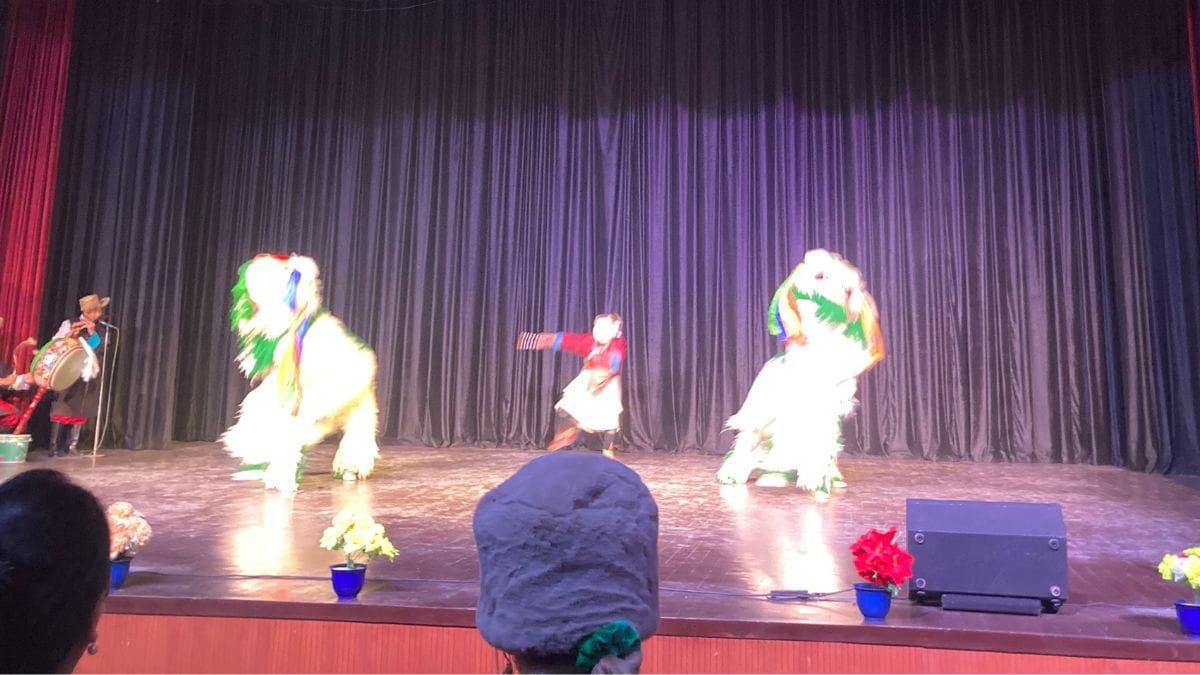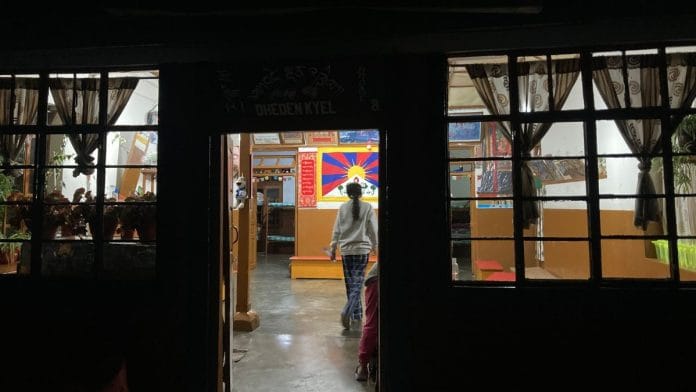Dharamshala: The Tibetan community in Dharamshala is grappling with new problems—drop in enrollment numbers in the schools established by them, preservation of their traditional art and culture, and increased emigration from India to the western world. The challenges faced by the exiled Tibetan community, headquartered in Himachal Pradesh, are largely due to a significant decline in the number of Tibetans fleeing China over the past decade and a half.
From around 3,000 refugees a year, till around 2008, the Tibetan resettlement office in Dharamshala in 2023 had to focus their efforts on resettling just six refugees, said Kunchok Migmar, the Tibetan settlement officer for the district, in an interaction with media persons earlier this month.
The fall in numbers fleeing has been especially acute since 2008—following the unrests witnessed that year in multiple provinces of China, including the Tibetan Autonomous Region (TAR), Qinghai, Sichuan, Gansu and Yunnan, primarily in the months from March till May and then sporadically till the end of the year. The unrest also coincided with Beijing hosting the Summer Olympics for the first time.
According to various Tibetans living in exile, both events led to significant restrictions on the routes used to flee China for India.
According to the Central Tibetan Administration (CTA) in exile, at least 344 protests of different magnitudes occurred throughout 2008. Nearly 7,000 Tibetans were arrested and around 200 were killed during the protests, according to the CTA, while China maintains that at least 19 people were killed by the protestors, who were predominantly Han Chinese.
“Before 2008, the Tibetan Children’s Villages (TCV)—the schooling system set up by the community in exile—had roughly 17,000 students. Now there are only 5,000 students across all the schools, with around 500 students in the senior classes,” said Kalsang Phuntsok, the General Secretary of TCV in an interaction with media persons.
Phuntsok added, “The 1980s saw an influx of Tibetans coming to India, leading to the opening of new schools. The number of students has started diminishing for a number of reasons. The two primary reasons are the falling number of Tibetans coming from China, and dropping fertility rates.”
The TCV, established in 1960 by the Dalai Lama for orphaned children who were among the early Tibetan refugees fleeing China, was originally managed by Tsering Dolma, the elder sister of the spiritual leader. However, after she passed away in 1964, its management passed into the hands of Jetsun Pema.
From 51 students in 1960, the TCV has seen over 50,000 students pass through its residence halls in 64 years—a third of the total Tibetan population in exile.
“By 2030, two or three of our schools will be left with no students. We are already thinking about closing down TCV Lower Dharamshala next year as it has only 74 students on its rolls,” said Phuntsok. “At our homes (dormitories), there were 80 to 100 children living together from ages of 6 to 14 at one point in time. Today there are about 20 to 30 children per home.”
As the number of Tibetans in exile continues to decline, the community has adapted, in a manner, by inviting Trans-Himalayan communities, such as those from Arunachal Pradesh and Ladakh, to participate in protecting their culture.
Today, around 30 percent of students in TCVs are Indian citizens from these regions and communities with communal links to the Tibetan community.
Earlier this year, the TCV administration extended an invitation to the Tibetan exile community living outside India to send their children to study in its traditional schooling system. This year, around six children from different countries were sent to its residential schools.
Over the years, many Tibetans living in India have emigrated, spreading the community across 130 countries, with a significant concentration in the Western world. Approximately half of the Tibetan exile population—around 80,000 people—remains in India.
Also read: For peace at border, India must bring Tibet up in talks with China, says Tibetan admin in exile
Impact on Tibetan arts and culture
For Tibetans in exile, the diminishing number of those fleeing China also has an impact on the preservation of its traditional arts and culture. According to the United Nations, at least a million Tibetan children in China have been slowly assimilated into the larger Han Chinese cultural norms through Beijing’s residential schooling system.
This has an impact on their native language and traditions, both of which the community living in exile are doing their best to preserve. One of the earliest institutions that the Dalai Lama setup mere months after arriving in India is the Tibetan Institute of Performing Arts (TIPA).

Founded in Kalimpong, before moving to Dharamshala in 1961, the institute has seen around 550 students pass through its residential programmes in studying various Tibetan art forms, including Lhamo (opera), as well as carpentry, music and other traditional performing arts.
“Our focus is not only on preserving Tibetan culture, but also Trans-Himalayan traditions in Ladakh and Tawang. In recent years, students from these regions have also been given training at TIPA,” said Dhondup Tsering, the director of the institute, in an interaction with media persons.
Around two decades ago, TIPA had about 50-60 students on their rolls going through the full seven-year training programme. Today, the number of students at TIPA is around 35.
“We are looking to collaborate with institutions in India, like the National School of Drama in New Delhi, and other institutes to help promote our culture across the country,” added Dhondup Tsering.
Earlier this year, the institute held an open call in the various schools in the surrounding areas of Dharamshala in order to find more students to train at TIPA. Primarily funded by grants from the Indian Ministry of External Affairs (MEA), TIPA has continued to promote art forms including the famed snow-lion performances apart from the annual Shoton Festival held in the months of June and July.
Similar to how Tibetan schools have adapted to bring in students from Ladakh and other regions across the Himalayas, TIPA is looking to expand its collaboration and training with new institutes that have slowly been created in these areas.
This reporter was in Dharamshala at the invitation of the India-Tibet Coordination Office (ITCO)
(Edited by Zinnia Ray Chaudhuri)
Also read: Tibetan admin in exile ‘not concerned’ by Trump’s election. ‘US support for Tibet is bipartisan’






